Published
- 14 min read
Top 7 Heroku Competitors in 2025: Best Platforms for Price & Performance

Key Takeaways
- Heroku was the gold standard for simple app deployment, but in 2025, many teams are exploring alternatives due to rising costs and limited control.
- This guide compares 7 top Heroku competitors across usability, performance, pricing, and team fit.
- Whether you’re a solo developer, a startup, or an enterprise team, you’ll find a platform that suits your stack and workflow.
- For a hands-on walkthrough, check out how to deploy your app using a modern platform in under 10 minutes.
Introduction: Why Look Beyond Heroku?
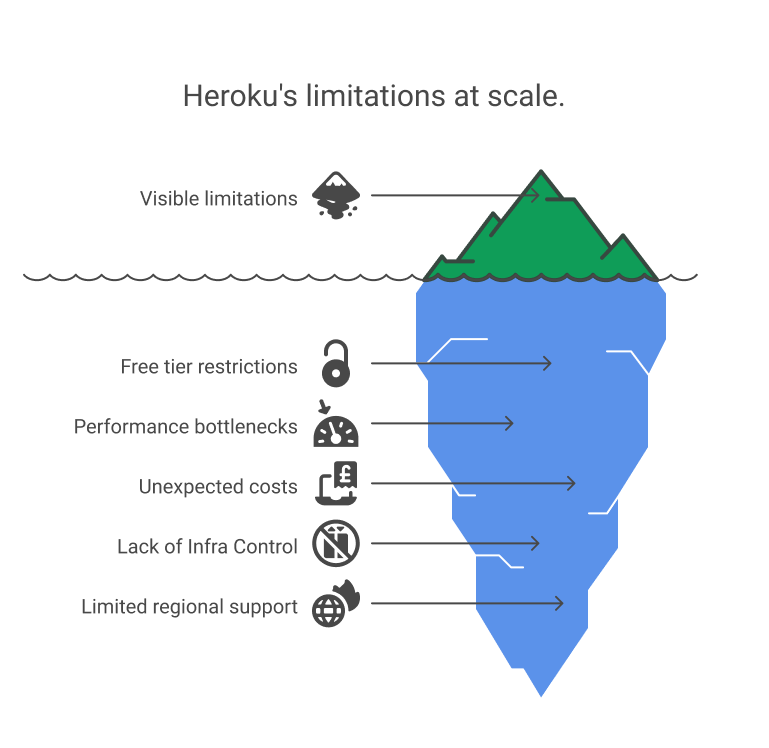 Heroku was one of the first platforms to make cloud deployment simple. With Git-based deploys, built-in services, and a clean UI, it became a favorite for early-stage startups, indie developers, and even large teams wanting faster workflows.
Heroku was one of the first platforms to make cloud deployment simple. With Git-based deploys, built-in services, and a clean UI, it became a favorite for early-stage startups, indie developers, and even large teams wanting faster workflows.
But over time, many teams hit the limits of what Heroku could offer:
- Free tier restrictions made it harder to experiment without paying early
- Performance bottlenecks became visible at scale, especially on shared dynos
- Add-ons and services often introduced unexpected monthly costs
- Lack of infra control made it difficult to optimize apps for custom use cases
- Limited regional support affected latency-sensitive apps
Key Features to Look for in a Heroku Competitor
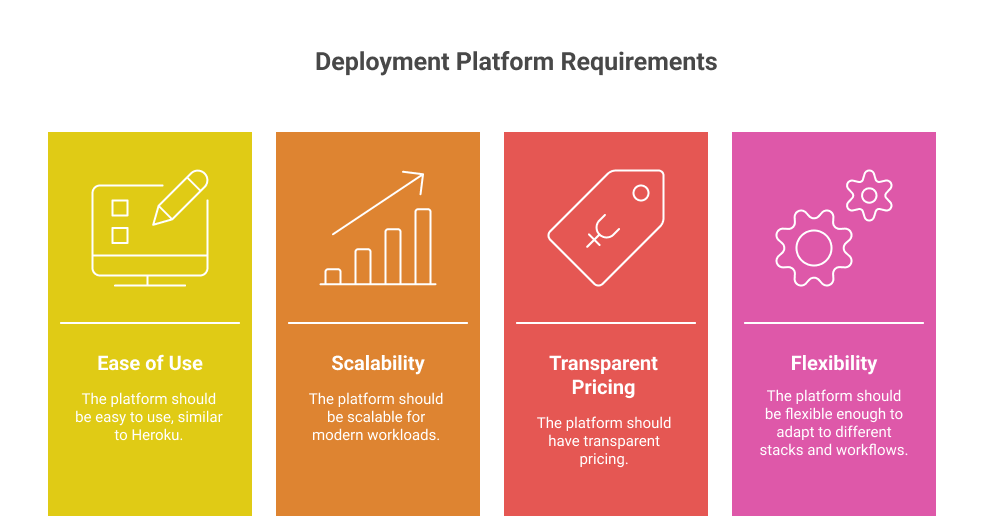 In 2025, teams want more than convenience. They need platforms that are:
In 2025, teams want more than convenience. They need platforms that are:
- Easy to use, like Heroku
- Scalable for modern workloads
- Transparent in pricing
- Flexible enough to adapt to different stacks and workflows
If you’re exploring Heroku competitors, you’re probably trying to avoid these pain points while keeping the developer experience just as seamless.
For a detailed comparison of leading alternatives, check out The Ultimate Guide to Heroku Alternatives in 2025.
In this guide, we’ll walk you through 7 platforms that developers and startups are turning to in 2025 with a breakdown of features, pricing models, and where each one shines (or falls short). Whether you’re looking to reduce costs, simplify DevOps, or deploy faster, there’s a better fit for your team.
1. Kuberns
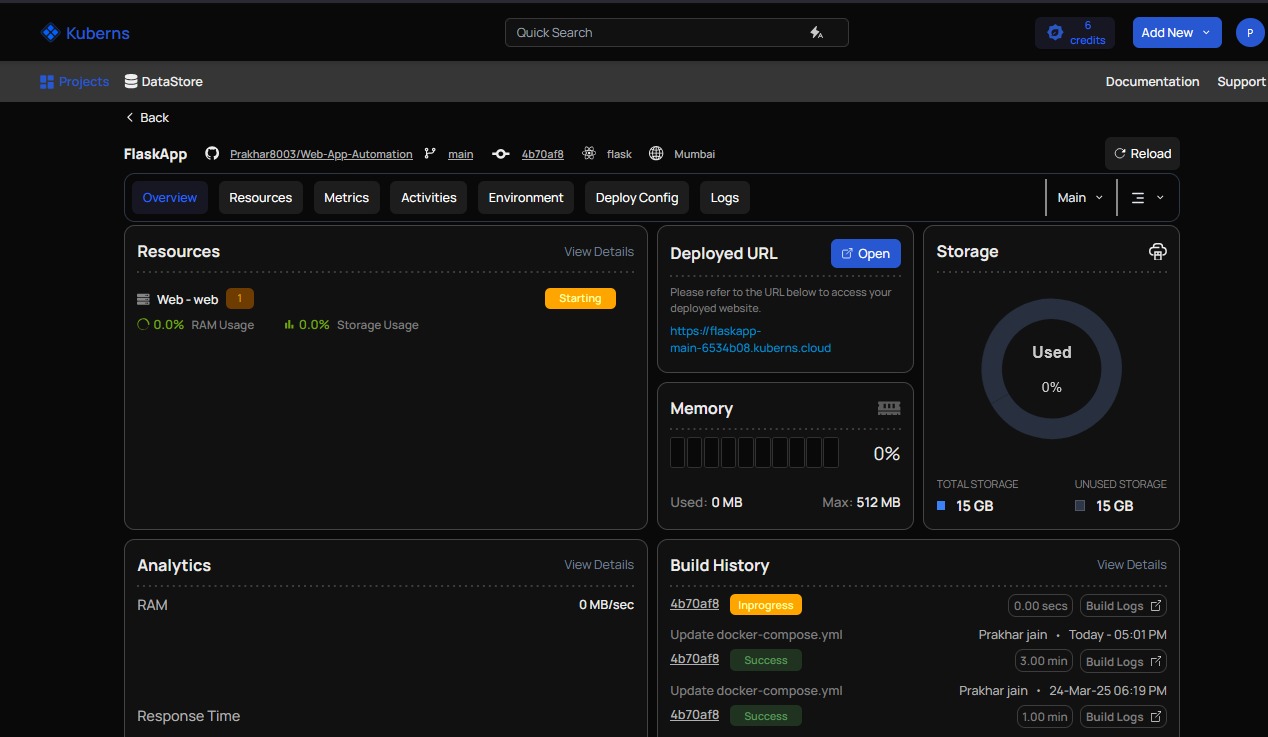 Best for startups, full-stack teams, and fast deployment workflows
Best for startups, full-stack teams, and fast deployment workflows
Kuberns is a developer-first PaaS that replaces not just Heroku, but also your CI/CD, Docker, YAML, and infra tools. It’s designed to make production deployment simple for small and growing teams.
With support for Node, Python, Flask, Django, and more, Kuberns automatically detects your stack and handles builds, staging, and rollback without any setup scripts required.
Why it competes with Heroku:
- One-click deploys from GitHub or GitLab: Kuberns simplifies the developer workflow by automatically detecting your project stack and spinning up containers without needing Dockerfiles or manual scripts.
- Built-in CI/CD, logs, metrics, and alerts: Everything from build to monitoring is handled in one place, giving developers full visibility into their app’s performance without relying on external tools.
- Automatic rollbacks and multi-environment support: You can easily manage staging, production, and preview environments, with the ability to roll back instantly if something goes wrong.
- Flat, transparent pricing: No per-seat billing. You only pay for the cloud resources you use, making it more predictable and cost-effective as your team grows.
- Significant AWS cost savings: By running on optimized infrastructure and intelligently managing compute usage, teams have reported up to 40% savings on AWS bills using Kuberns.
👉 See how Heroku compares to Kuberns
2. Render
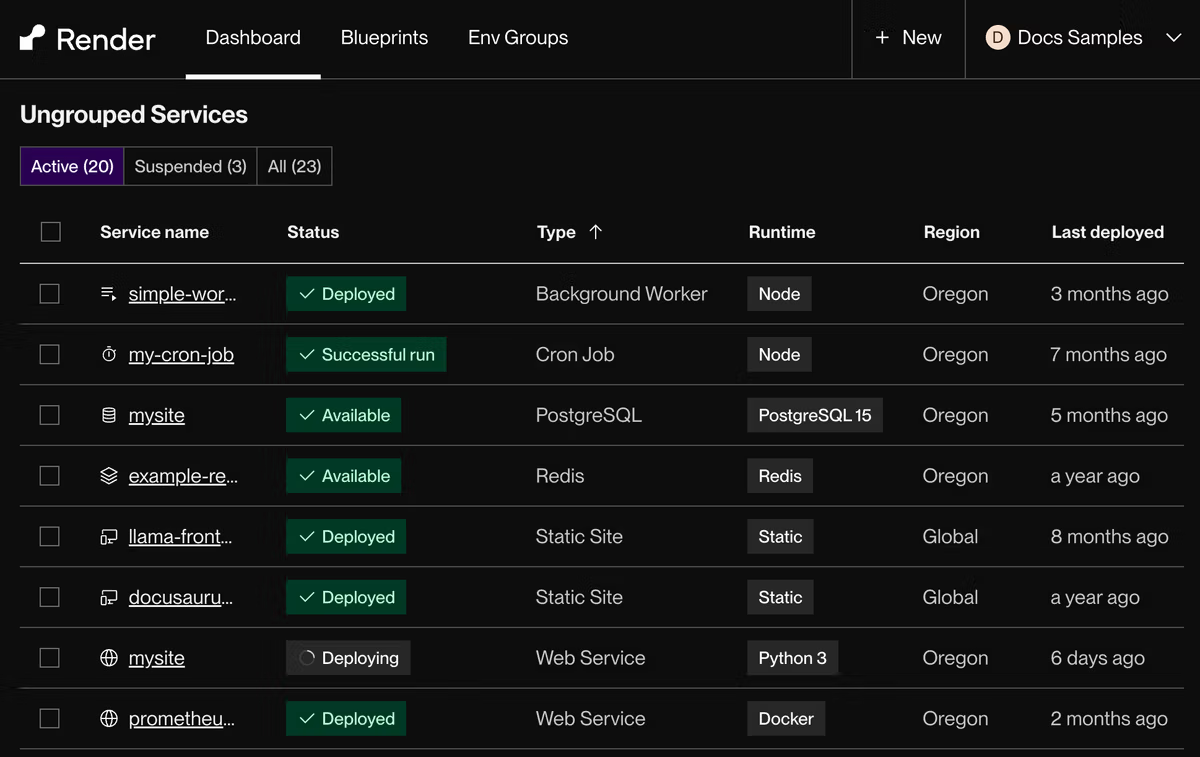 Best for developers looking for a Heroku-like experience with more control
Best for developers looking for a Heroku-like experience with more control
Render is often the first platform developers test after Heroku. It offers a clean interface and supports services like web workers, cron jobs, and static hosting.
While setup is easy and the pricing is straightforward, things can get expensive as usage scales. It’s great for solo projects, but startups may need more flexibility over time.
Pros:
- Great developer experience: Clean UI, intuitive dashboard, and simple Git-based workflows make it easy for developers to get started without a steep learning curve.
- Easy app hosting and background job support: You can deploy web services, background workers, and cron jobs with minimal configuration.
- Free tier available: Suitable for testing or hobby projects, the free plan allows teams to explore the platform before committing to a paid plan.
Cons:
- Limited infrastructure customization: You don’t get granular control over servers, networking, or scaling parameters, which can be a constraint for advanced setups or performance tuning.
- Costs rise quickly with traffic and usage: While the initial pricing is competitive, additional services like staging environments, persistent workers, or premium add-ons can significantly increase your monthly bill as your app scales.
👉 See how Render compares to Kuberns
3. Railway
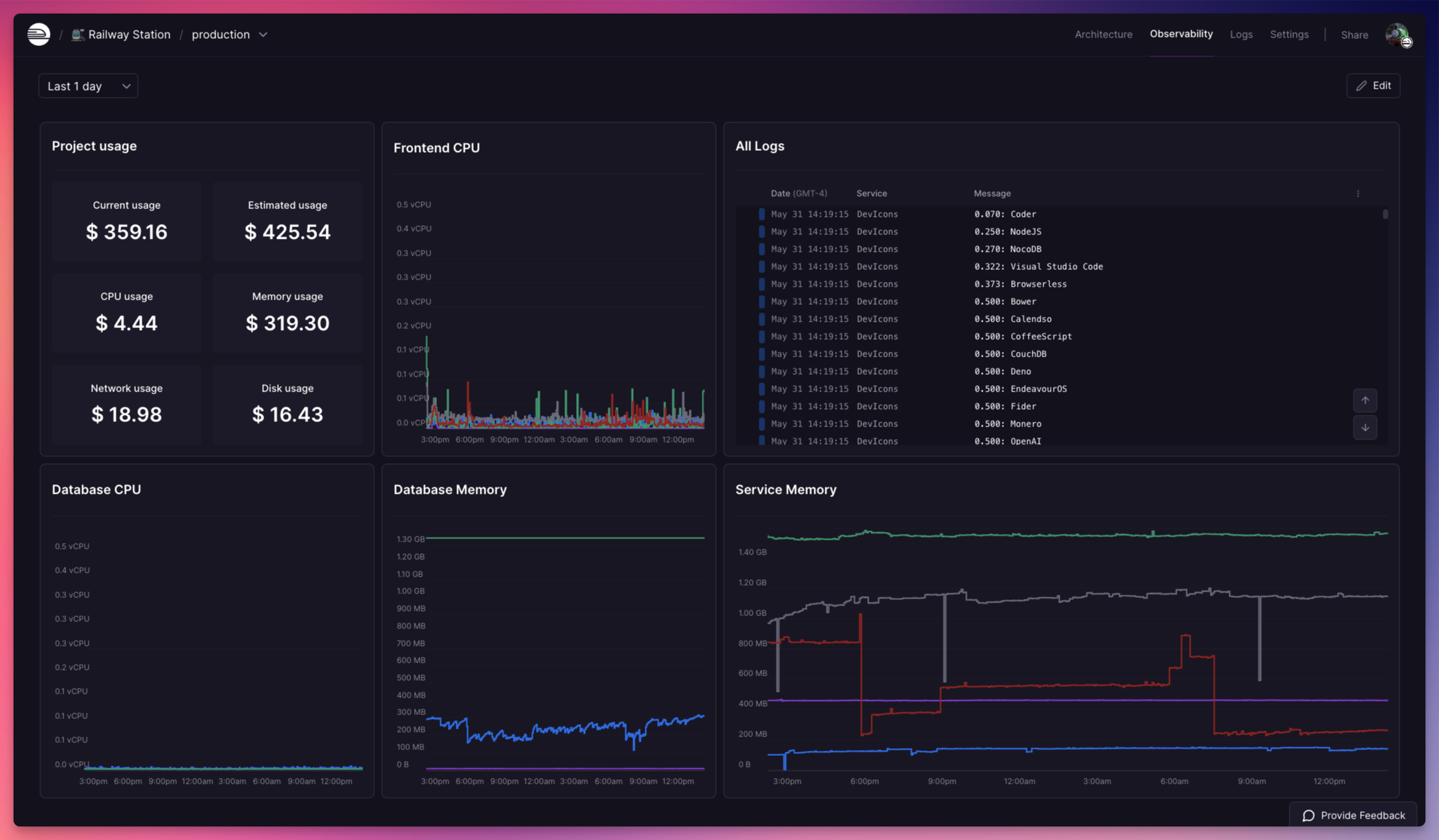 Best for side projects and hackathon-ready apps
Best for side projects and hackathon-ready apps
Railway is ideal for fast prototyping. It auto-detects your tech stack and deploys apps with zero configuration. For early-stage work, it’s smooth and intuitive.
But it lacks features required for production-grade setups, such as robust monitoring, rollback support, and advanced environment management.
Pros:
- Beautiful interface and Git-based workflow: Railway’s polished UI and GitHub integration make it easy to deploy apps with just a few clicks. Developers can see builds, logs, and deployments in one place without needing to touch CLI tools.
- Zero config for most stacks: Railway auto-detects frameworks like Node.js, Python, Go, and more, handling setup without requiring Dockerfiles or YAML. This makes it ideal for quick prototypes or MVPs.
Cons:
- Lacks production-focused features: While great for getting started, Railway misses key features like advanced observability, granular resource allocation, and built-in rollback mechanisms needed for production-ready deployments.
- Limited infra visibility and scaling options: Developers have minimal control over how apps scale or consume resources. There’s also limited insight into metrics, which can be a challenge when troubleshooting or optimizing for performance.
👉 See how Railways compares to Kuberns
4. Fly.io
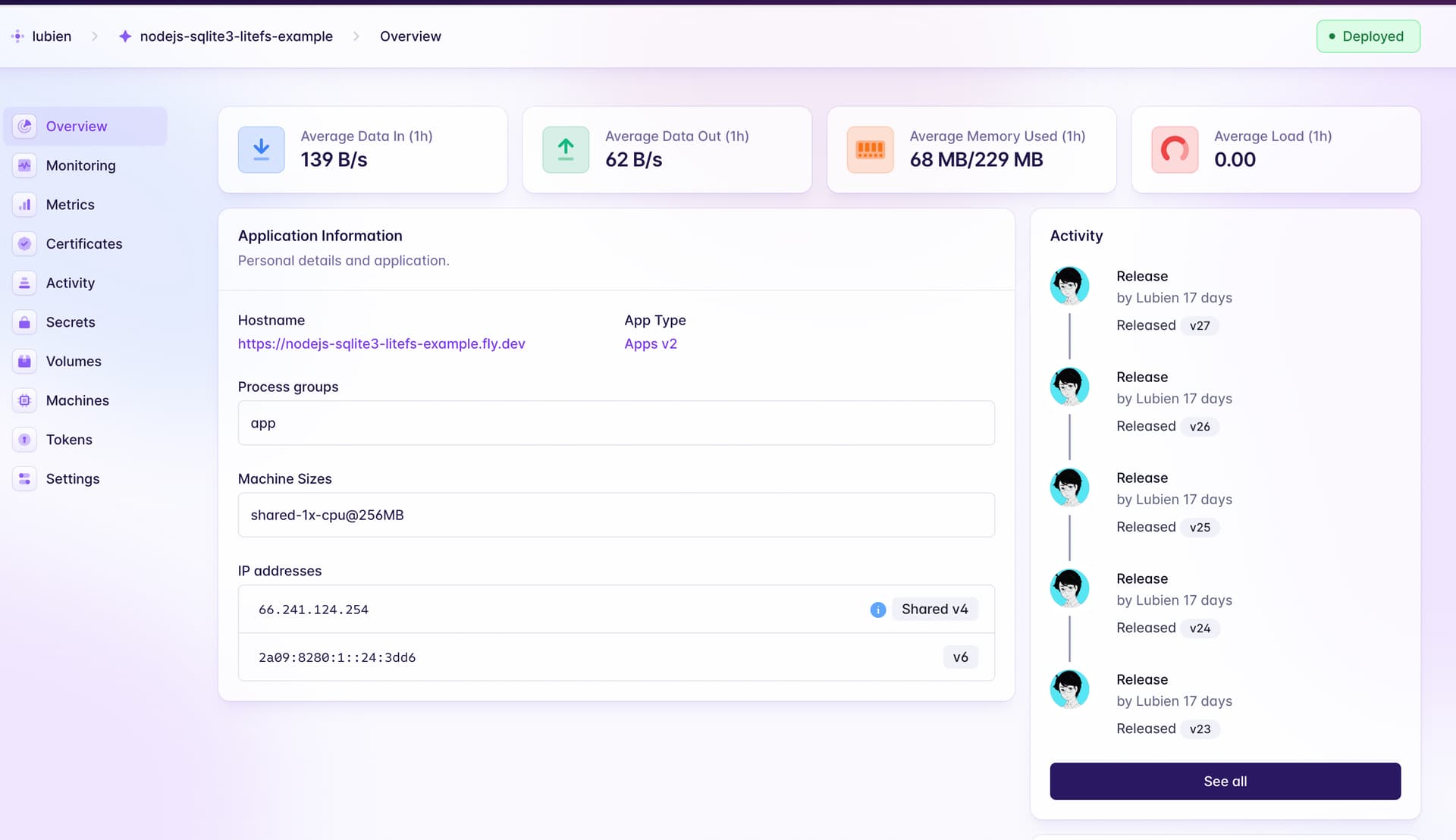 Best for apps that need low-latency, global performance
Best for apps that need low-latency, global performance
Fly.io is built for deploying applications close to your users. It distributes workloads across edge locations and offers more control over infrastructure than most traditional PaaS tools. While powerful, it requires a deeper understanding of networks, regions, and configuration compared to Heroku-like platforms.
Pros:
- Edge deployment and multi-region support: Fly.io allows your app to run across global data centers, minimizing latency by serving content closer to your users. Ideal for real-time applications or products with an international user base.
- Fine-grained infra control for custom tuning: You can specify regions, manage persistent volumes, and control CPU/memory allocation. This level of control is useful for teams that want to optimize for performance, cost, or compliance.
Cons:
- Steeper learning curve compared to Heroku or Render: Developers may need to understand system-level concepts like networking, scaling strategies, and custom Docker builds. Fly.io assumes some infra knowledge out of the box.
- Not ideal for beginners or rapid prototyping: Unlike platforms with one-click deploys, Fly.io’s manual setup and config requirements can slow down early development or experimentation. It’s more suited to production-grade apps with custom deployment needs.
5. Dokku
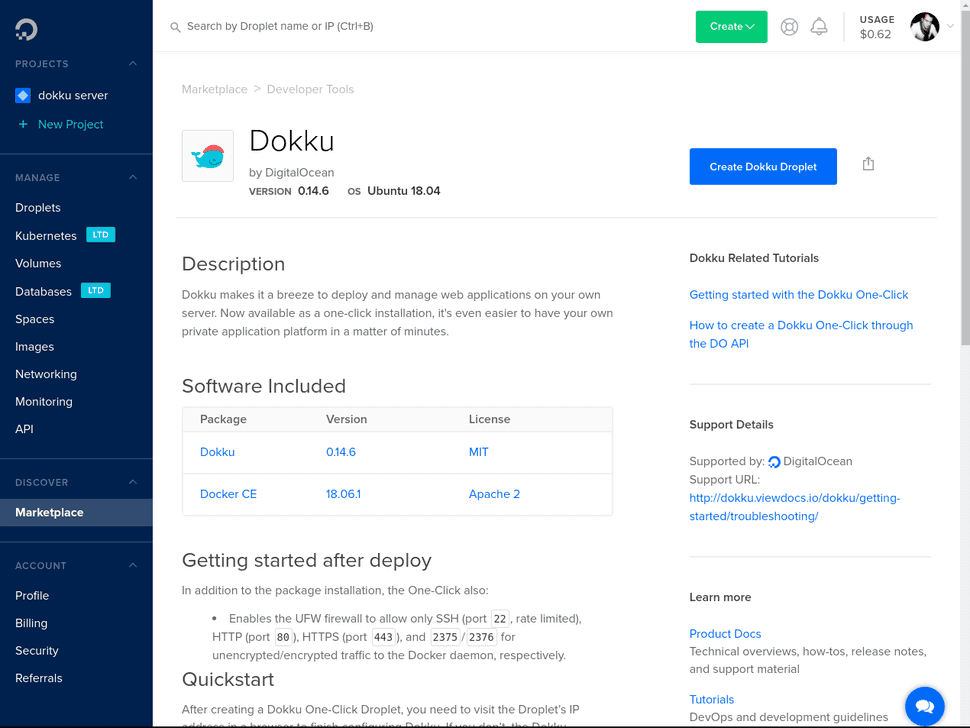 Best for teams that want full control and are okay with self-hosting
Best for teams that want full control and are okay with self-hosting
Dokku is a self-hosted PaaS that replicates much of the Heroku experience. You install it on your own server, and it supports plugins for databases, domains, and CI/CD.
It’s a one-time setup that works best for devs who want Heroku’s simplicity but don’t want ongoing hosting fees.
Pros:
- Full ownership with no recurring fees: Once deployed, Dokku runs entirely on your own infrastructure. This eliminates monthly platform charges and gives you long-term control over your costs and server environment.
- Heroku-style Git-based workflow: Developers can deploy code using simple Git pushes, while plugins handle essential tasks like provisioning databases, setting up SSL, and managing domains. It’s familiar for teams used to Heroku.
- Ideal for self-hosting and customization: Dokku is great for teams that prefer to run apps on their own terms. You can choose your server provider, optimize performance, and avoid getting locked into a specific platform.
Cons:
- Manual setup and ongoing maintenance required: You’ll need to configure your server, set up backups, and apply security updates regularly. This increases operational overhead, especially for small teams.
- Not beginner-friendly: Dokku assumes you know your way around Linux, SSH, firewalls, and basic infrastructure concepts. Troubleshooting can require command-line knowledge and deeper system access.
- Lacks native scaling or monitoring features: While many features can be added through community plugins, things like auto-scaling, rollbacks, or performance dashboards aren’t included out of the box.
6. Qovery
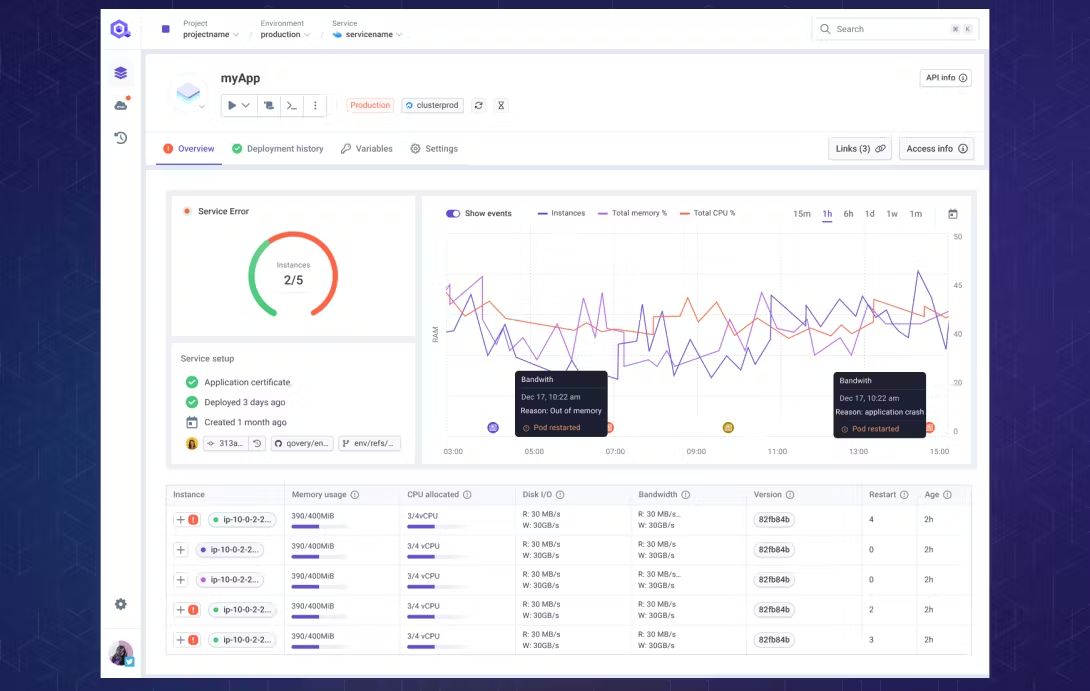 Best for Kubernetes-native teams that want automation without the complexity
Best for Kubernetes-native teams that want automation without the complexity
Qovery is a deployment platform built on top of Kubernetes, designed to give teams more power and flexibility without needing to manage infrastructure manually. It streamlines DevOps tasks like provisioning environments, deploying code, and managing resources all through a clean developer interface.
Pros:
- Powerful for scaling teams using Kubernetes: Qovery is ideal for companies already working with Kubernetes or planning to adopt it. It brings the flexibility of Kubernetes with a more approachable interface that’s built for modern engineering teams.
- Automates key infrastructure workflows: From spinning up environments to handling deployments, scaling, and resource management, Qovery reduces the manual overhead typically associated with Kubernetes.
- No need to write YAML for every change: Developers can manage complex workflows like GitOps, multi-env deployments, and access control without diving into low-level Kubernetes config files.
- Great for Git-based and team-driven workflows: Built-in support for GitHub/GitLab workflows, branch-based environments, and team-based role management makes it easy to collaborate across stages.
Cons:
- Learning curve for non-Kubernetes teams: If your team isn’t already using Kubernetes, understanding concepts like pods, clusters, and manifests can be challenging at first.
- Initial setup can be time-consuming: Migrating from simpler platforms like Heroku may require some upfront effort in configuration, integrations, and permissions.
- May be too complex for smaller projects: For solo developers or early-stage startups, Qovery’s Kubernetes-first approach might be overkill especially if you just need to get a project live quickly.
7. Vercel
 Best for frontend teams using Next.js or React
Best for frontend teams using Next.js or React
Vercel is purpose-built for frontend projects. It works beautifully with modern JS frameworks and comes with built-in previews and global CDNs.
It’s not a Heroku replacement for backend-heavy apps but fits perfectly if your primary focus is UI.
Pros:
Best-in-class frontend performance: Vercel uses a global CDN and edge caching to serve frontend assets with ultra-low latency. It’s especially well-optimized for frameworks like Next.js, React, and static site generators.
Preview environments for every pull request: Frontend teams can test changes in isolated environments before merging, making collaboration faster and more reliable across QA, design, and dev teams.
Seamless Git integration: Deployments are fully automated with GitHub and GitLab. Developers can deploy by simply pushing code, with built-in rollbacks and version tracking.
Cons:
Backend support is limited: Running full-stack or backend-heavy apps on Vercel often requires custom workarounds. Serverless functions are available but may not fit complex architectures.
Pricing scales fast for dynamic workloads: As usage grows especially with edge functions, bandwidth, or higher compute requirements, costs can spike quickly, making it less predictable for scaling apps.
Less control over infrastructure: Compared to platforms that offer backend or container-level control, Vercel limits customization at the infrastructure layer. This can be restrictive for apps that need granular performance tuning or specific deployment patterns.
👉 See how Vercel compares to Kuberns
Choosing the Right Heroku Competitor
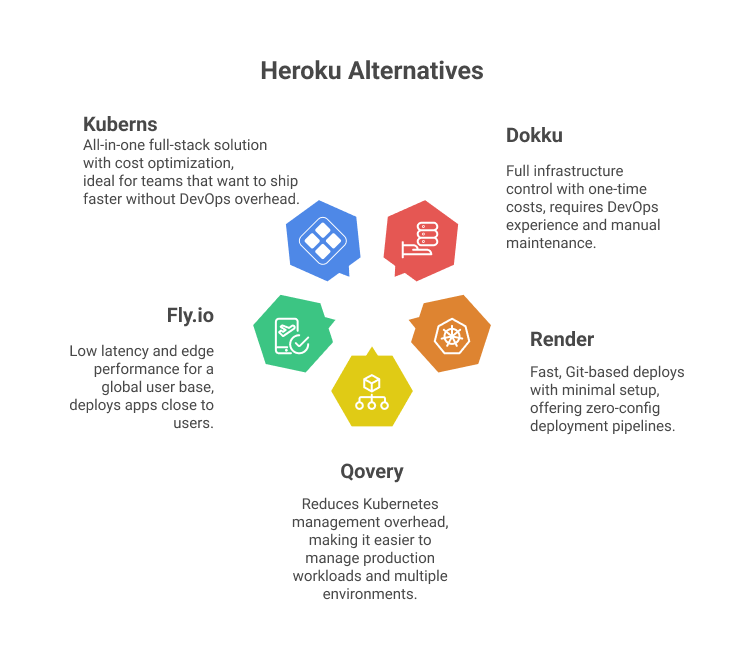 Start by mapping your team’s actual needs to what each platform offers:
Start by mapping your team’s actual needs to what each platform offers:
- Need full infrastructure control with one-time costs? Dokku is a solid option. It’s open-source, self-hosted, and gives you complete ownership over your environment. However, it requires DevOps experience and manual maintenance.
- Looking for fast, Git-based deploys with minimal setup? Platforms like Kuberns and Render offer zero-config deployment pipelines. Kuberns stands out by bundling CI/CD, monitoring, and rollback with no platform fees and up to 40% AWS cost savings.
- Already invested in Kubernetes but want to reduce the management overhead? Qovery sits on top of Kubernetes and abstracts most of the complexity, making it easier to manage production workloads and multiple environments.
- Need low latency and edge performance for a global user base? Fly.io deploys apps close to your users, enabling low-latency responses with regional distribution and infrastructure-level control.
- Want an all-in-one full-stack solution with cost optimization? Kuberns is ideal for teams that want to ship faster without DevOps overhead. It includes staging, production, monitoring, and CI/CD in one UI, while helping you save significantly on AWS infrastructure.
Final Thoughts
Heroku made deployment simple, but 2025 demands more flexibility, performance, and affordability.
Whether you’re building a side project or scaling a production app, the platforms above provide solid alternatives to Heroku with better pricing and features.
Ready to try something better?
👉 Deploy your app on Kuberns now

Frequently Asked Questions
Q: Which platform is best for replacing Heroku for full-stack apps?
A: Kuberns is a strong fit here, offering support for frontend and backend frameworks, integrated CI/CD, monitoring, and staging environments.
Q: Can I get lower costs than Heroku?
A: Yes. Platforms like Kuberns offer flat pricing with no per-user or add-on fees, and often save up to 40% on AWS infrastructure. Read more in The Ultimate Guide to Heroku Alternatives in 2025.
Q: What if I don’t want to manage infrastructure at all?
A: Platforms like Kuberns and Railway handle infra behind the scenes. Dokku, on the other hand, requires you to manage your own server.
Q: Do these platforms support database integrations?
A: Most of them do. Kuberns, Render, Railway, and Fly.io support managed databases or offer easy ways to integrate external DBs.
Q: What’s the fastest way to try a Heroku alternative?
A: Start with Kuberns – connect your repo, deploy in minutes, and explore built-in tools without setup.